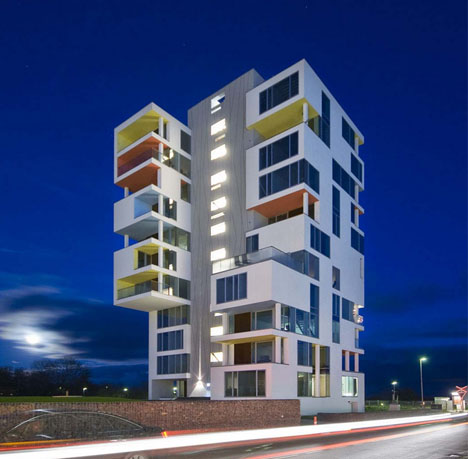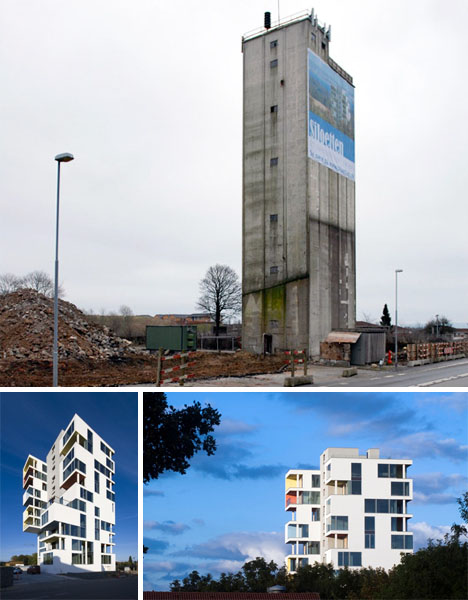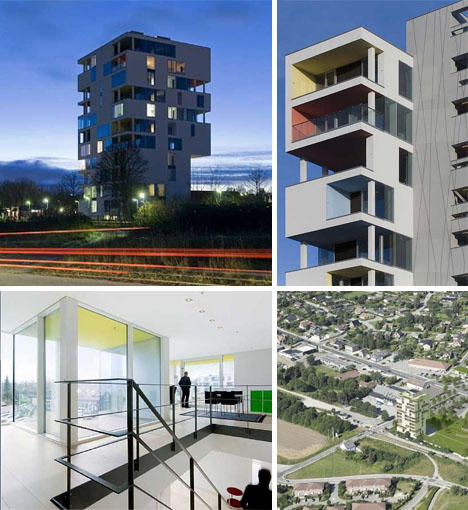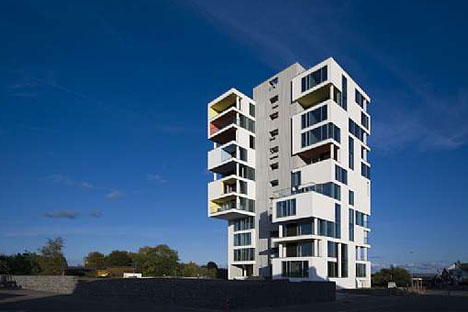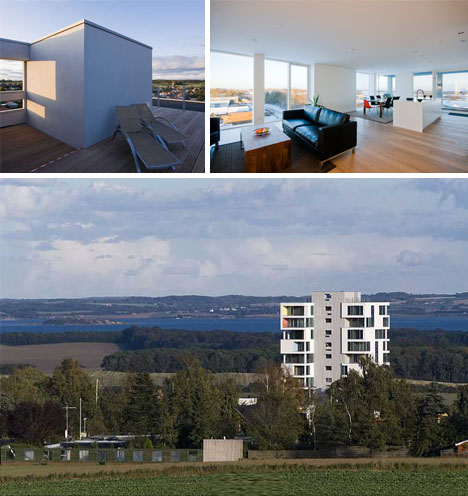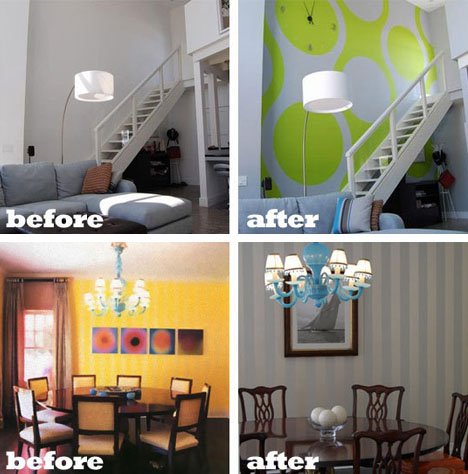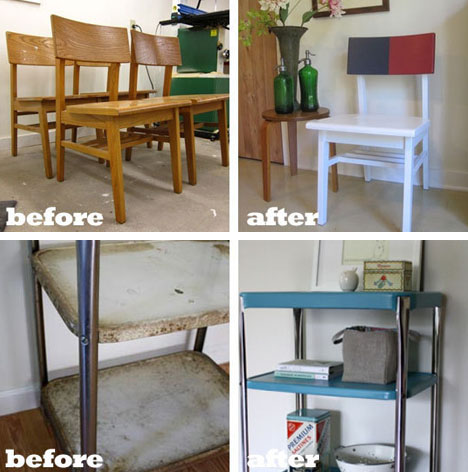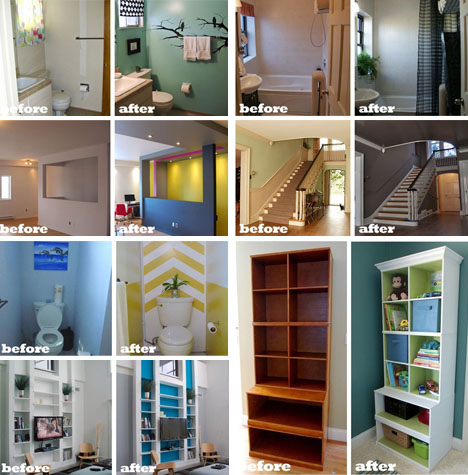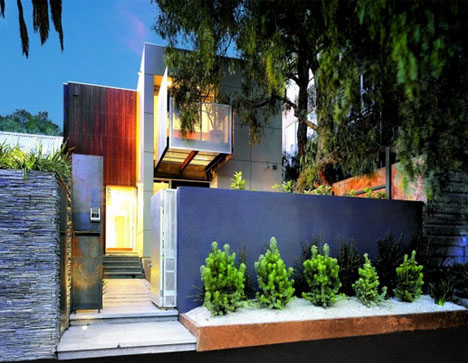
Creating a green residential oasis is no easy feat when faced on three sides with potentially nosy neighbors on an urban plot – the key is making the hard building decisions look easy.
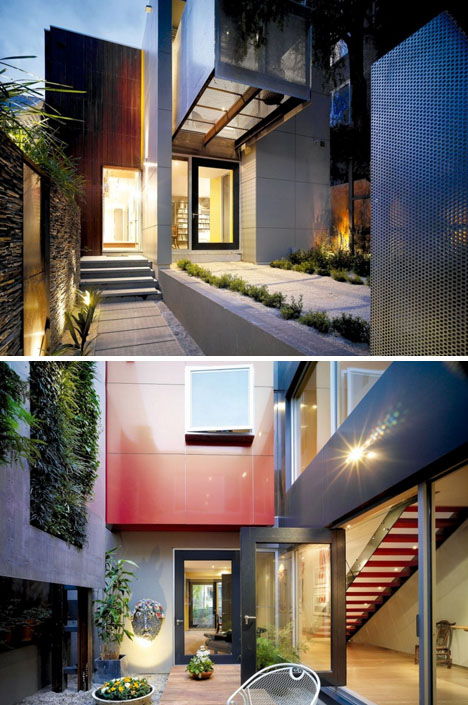
A series of perforated metal, natural stone, cast-in-place concrete and glass deck walls frame the entryway to a relatively secluded-feeling series of indoor and outdoor spaces designed by Australian architect Michael Morris.
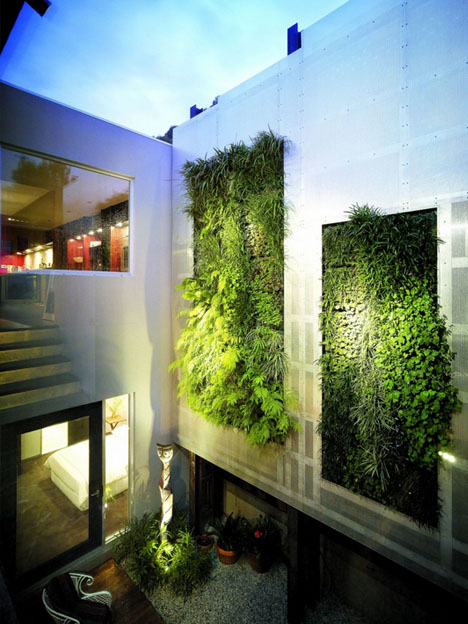
Softening the edges of these straight-lined design elements are a complementary set of vegetation-related strategies, starting with a row of young pines in front of the lot, followed by a series wild grasses suspended at eye level, an overhanging old peppercorn tree from an adjacent property and a series of semi-abstract green walls in the courtyard.
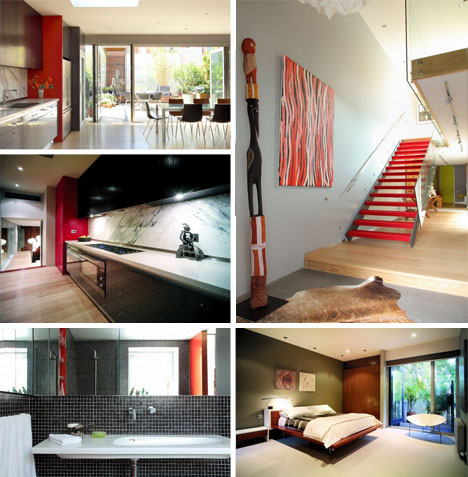
Inside, a simple repetitive use of red accents ties together disparate rooms, each designed in a pragmatic way to address its particular function, using conventional finishes and traditional materials in combination with contemporary aesthetic sensibilities.
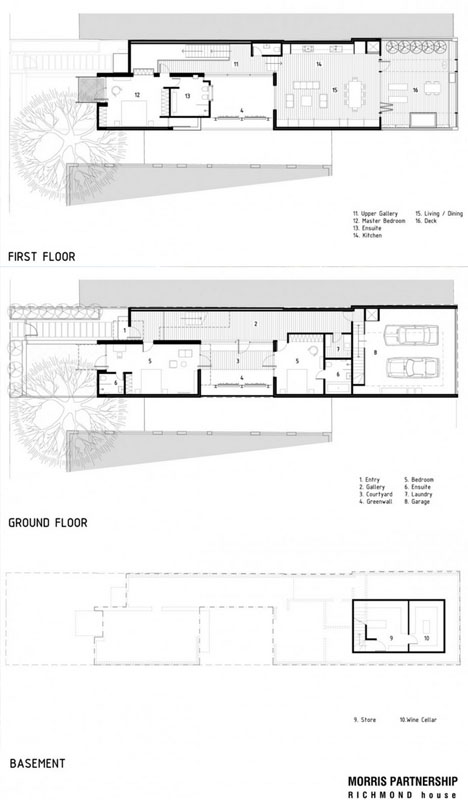
There is nothing expressly novel about the material palette or the visual techniques employed, but in combination they show a remarkable sensitivity to site and context, and exert conscious control over all views in and out, all without feeling forced or otherwise artificial.




